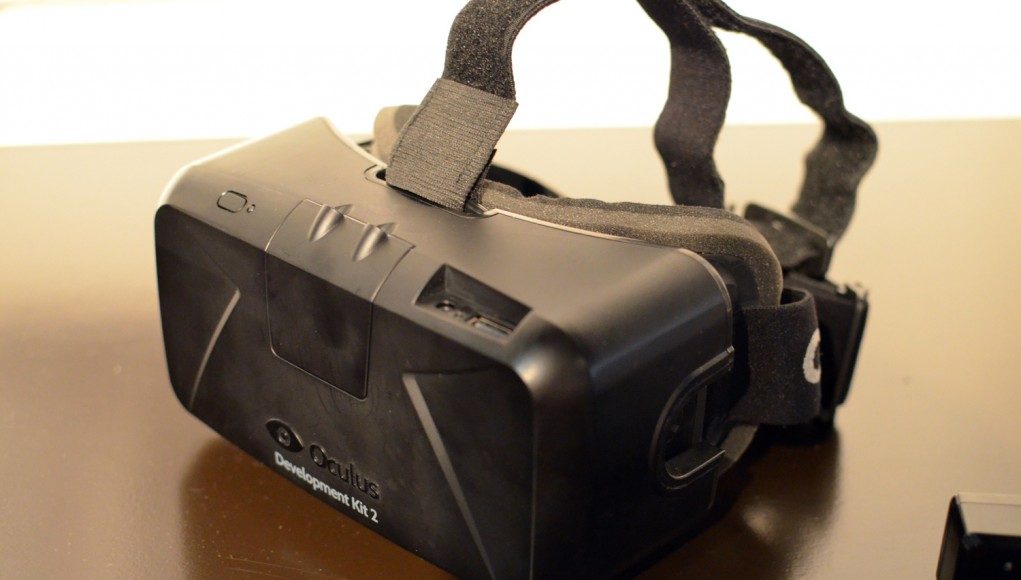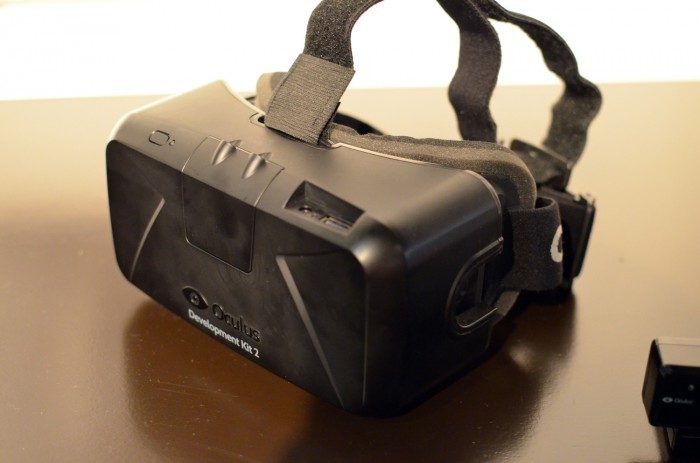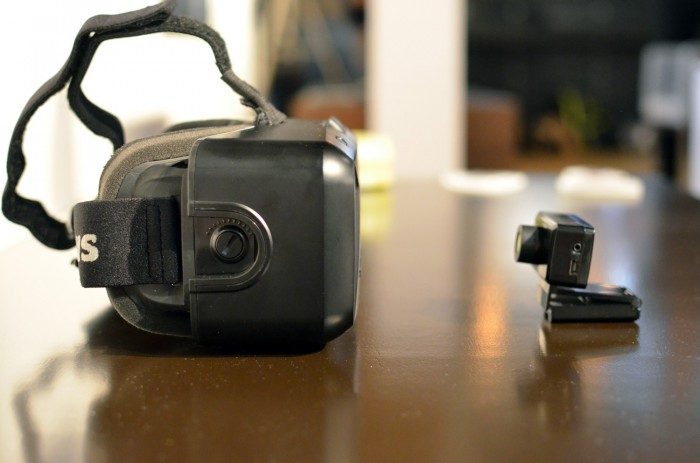Today at GDC 2014 Oculus VR has announced availability of their second Oculus Rift developer kit, widely referred to as the DK2. The unit, which includes positional tracking, low-persistence, and other major improvements over the DK1, is available for pre-order starting today for $350 and is expected to ship in July.
Oculus Rift DK2 Pre-order, Release Date, Specs, and Features
After a seemingly convenient parts shortage that saw suspended shipping of the original Oculus Rift DK1, the company has now opened the doors to pre-orders for their next developer kit, the Oculus Rift DK2. The DK2 encompasses the features demonstrated by the Crystal Cove prototype, that we saw at CES in January, along with a few new goodies. The expected Oculus Rift DK2 release date is July, 2014.
Pre-order the Oculus Rift Developer Kit 2 (DK2)
The DK2 has a 5-inch 1080p OLED display with low-persistence technology. Positional tracking is achieved with an array of IR LEDs and a custom camera that will ship with the DK2. For the new Oculus Rift dev kit, the IR LEDs seen on Crystal Cove have been hidden behind an IR-transparent housing, so no more white dots on the outside of the unit. The lenses have been improved over the DK1; they are larger and clearer across the board. The camera that ships with the device is custom made by Oculus VR, not a rebrand of some existing device. Thanks to the camera and the IR LED array, the unit is capable of positional tracking with sub-millimeter accuracy.
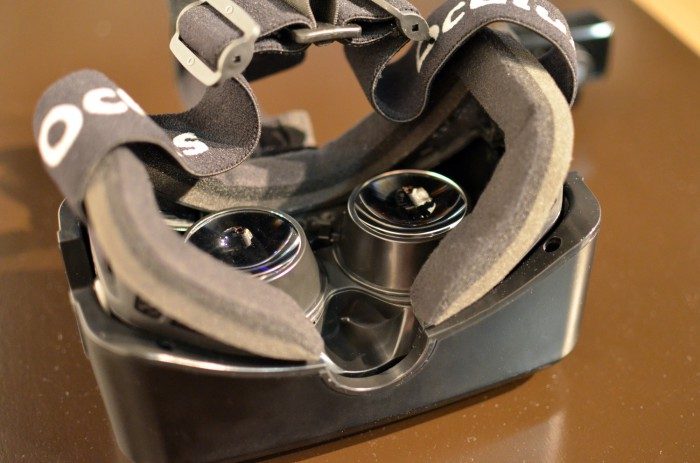
Those who have been using the DK1 for a while will be delighted to hear that the control box has been eliminated from the DK2. The unit is now powered directly over USB. A single (detachable) 10-foot cable runs from the DK2 and ends with a USB and HDMI connector. The power button has been moved to the HMD itself and atop the brow of the device is a powered USB port which will come in very handy for connecting peripherals. Next to the USB port is an unidentified port which looked to be about the size of a 3.5mm headphone jack. Oculus’ founder, Palmer Luckey, would only confirm that it was not for audio….
Here are the official Oculus Rift DK2 specs:
Oculus Rift DK2 Release Date: July, 2014
- Display
- Resolution: 960×1080 per eye
- Refresh Rate: 75 Hz, 72 Hz, 60 Hz
- Persistence: 2 ms, 3 ms, full
- Viewing Optics: 100º Field of View (nominal)
- Interfaces
- Cable: 10’ (detachable)
- Input: HDMI 1.4b
- USB device: USB 2.0
- USB host: USB 2.0 (requires DC Power Adapter)
- Camera USB: USB 2.0
- Inertial Tracking
- Sensors: Gyroscope, Accelerometer, Magnetometer
- Update Rate: 1000 Hz
- Positional Tracking
- Sensor: Near Infrared CMOS Sensor
- Update Rate: 60 Hz
- Weight: 440 g (without cable)
- Included Accessories
- DC Power Adapter
- International Power Plugs
- Nearsighted lens cups
- Lens cleaning cloth
I asked Oculus if the DK2 would ship with a carrying case as with the DK1 (which I think most people found quite useful). I was told that they were still unsure whether or not the DK2 would get a case but noted that the cost of the DK2 had gone up substantially over the DK1 and they they were pricing it as aggressively as possible—maybe at the expense of the case.
No Turning Back
The Oculus Rift DK2 offers an incredible leap in performance over the DK1. I was impressed with the Crystal Cove prototype at CES, but getting my head into the DK1 and then DK2 side-by-side with the same demo (Tuscany VR) codified for me all of the R&D Oculus has done over the last year. Yes, the screen is higher resolution, but that’s a minor point compared to what low-persistence and positional tracking bring to the table. The image is substantially sharper in the DK2 when moving your head, mostly thanks to low-persistence. I swear I could feel the difference between the DK1 and DK2 on my eyes. It’s hard to describe, but where the DK1 feels like looking through binoculars into another world, the DK2 feels like sticking your head out the window into another world. That’s not to say that the field of view is higher, but there’s something far more comfortable about using the DK2.
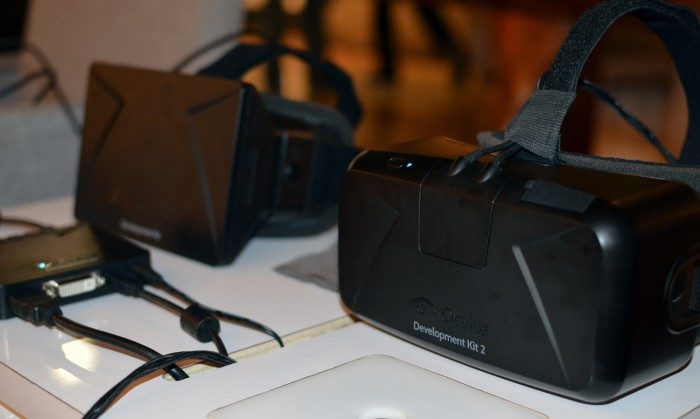 Like going back to a favorite video game of one’s youth, the DK1 will always hold a special place in our hearts, but the DK2 is the decidedly better experience. Oculus’ restraint in not trying to sell the DK1 as ‘good enough’ for consumer VR was a vital move that another company could have easily made.
Like going back to a favorite video game of one’s youth, the DK1 will always hold a special place in our hearts, but the DK2 is the decidedly better experience. Oculus’ restraint in not trying to sell the DK1 as ‘good enough’ for consumer VR was a vital move that another company could have easily made.
Today the show floor opens at GDC 2014 and Oculus VR’s booth is chock full of DK2’s for attendees to try out. We’ll have more on the DK2 soon, stay tuned!

